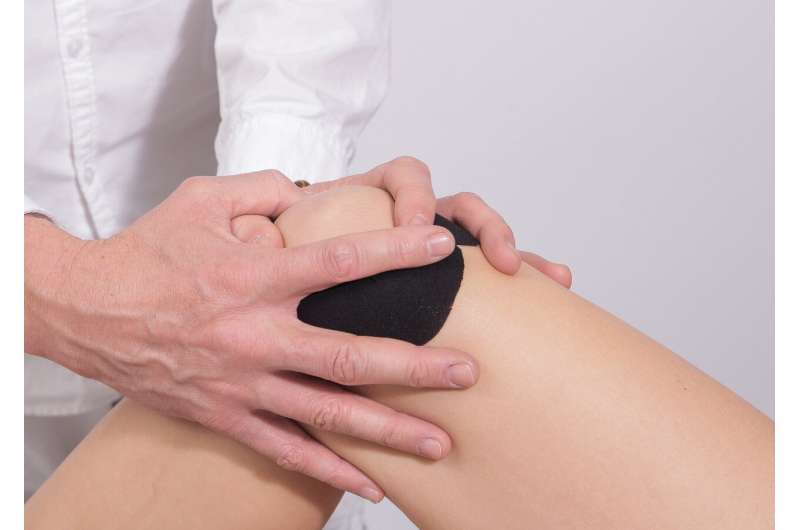Q&A: Pain after knee replacement surgery

Dear Mayo Clinic: It has been months since I had knee replacement surgery, but my knee is still hurting. Can anything be done at this point, or does the surgery just not eliminate pain in some patients?
A: Although it's uncommon, a small percentage of patients continue to have chronic knee pain after knee replacement surgery. But when that happens, you don't have to just put up with the pain. Have your situation evaluated. Several additional treatment options may ease chronic knee pain after knee replacement.
Knee replacement surgery, also known as knee arthroplasty, is one of the most common orthopedic surgeries performed today. It is most often used to repair joint damage caused by osteoarthritis or rheumatoid arthritis that causes severe knee pain and makes it hard to perform daily activities.
During knee replacement, a surgeon cuts away the damaged bone and cartilage from your thighbone, shinbone and kneecap, and replaces it with an artificial joint. For most people, knee replacement significantly improves mobility and relieves knee pain. But in some patients, the pain persists after surgery.
Your first step in dealing with ongoing knee pain in this situation is to make an appointment to see the surgeon who performed your knee replacement. He or she can evaluate your knee and check for possible complications from the surgery, such as an infection or a problem with the artificial joint.
In the past, if a surgeon didn't uncover potential issues that could cause the ongoing pain at that point, patients were left with few treatment options to reduce the pain, other than taking pain medication. Over the past several years, however, there have been some new developments to treat pain after knee replacement surgery.
The first is a minimally invasive procedure where the nerves that carry pain information away from the knee are ablated, or destroyed, with the use of a special needle. Studies of this approach are showing promising results for pain reduction in people with chronic knee pain who are not good candidates for surgery. This approach also is helping those who have had surgery, but knee pain remains a problem, as in your case.
Another minimally invasive procedure that has shown some benefit for chronic knee pain after surgery is the use of dorsal root ganglion, or DRG, stimulation. The dorsal root ganglion is a collection of nerves near the spinal canal that can be stimulated to provide pain relief in certain conditions.
Results of multiple research studies published in medical literature have shown this to be a promising approach for the relief of chronic pain. The DRG stimulator is a device that's implanted beneath the skin that connects to multiple leads. Those leads conduct electricity to the area that requires the stimulation. The electrical signals interfere with the transmission of pain signals to the brain, and that results in a decrease in chronic pain.
Although these new interventions show promise in reducing chronic knee pain after knee replacement surgery, they do not work for everyone. If you're interested in learning more, ask your surgeon for a referral to a pain clinic for a full evaluation and consultation. A pain medicine specialist can review your condition and discuss what options might work best in your individual situation.
©2019 Mayo Foundation for Medical Education and Research
Distributed by Tribune Content Agency, LLC.


















